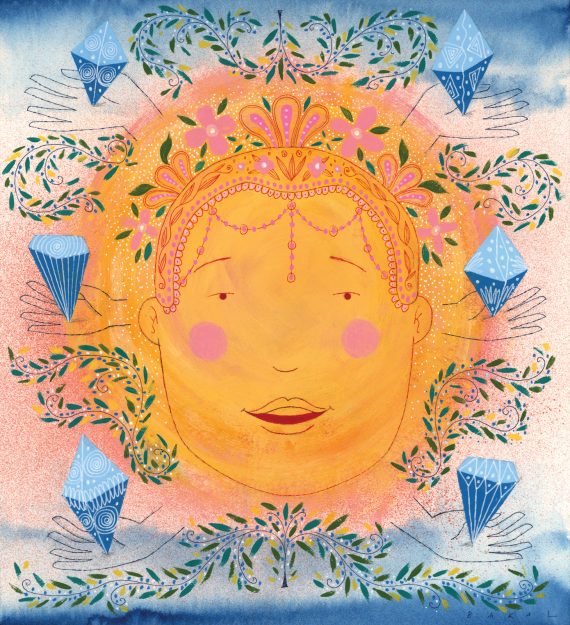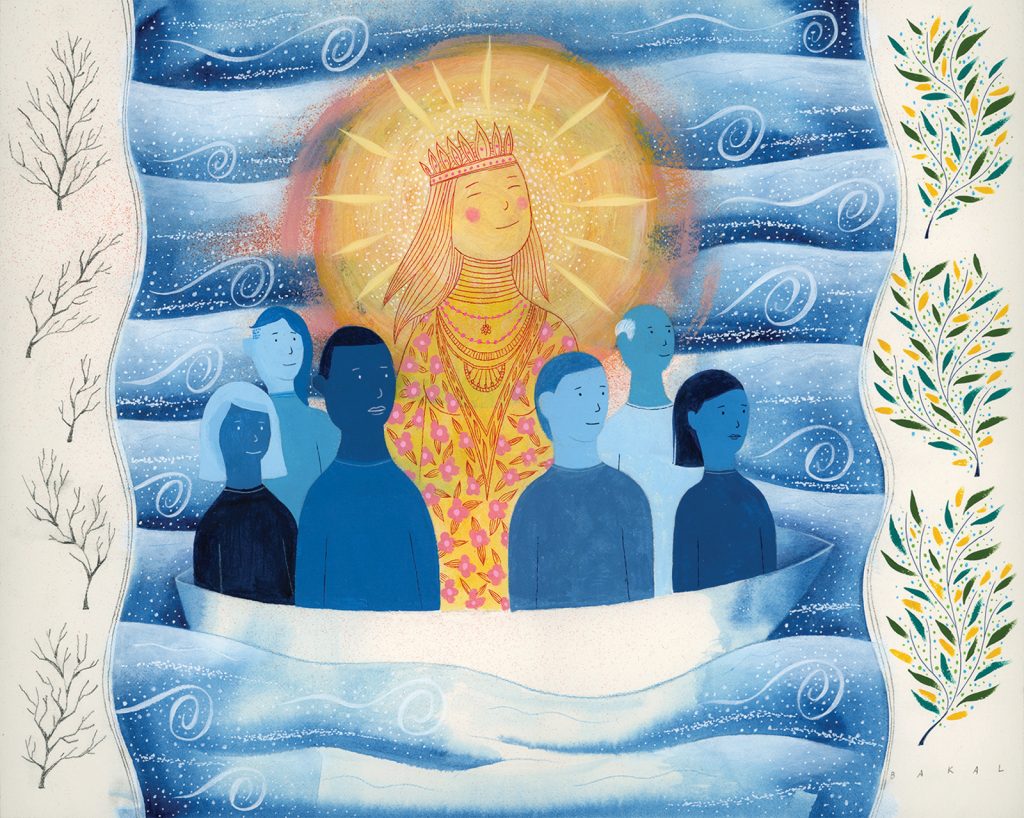Recently, a question popped up in my mind: “Why do Bodhisattvas have more fun?”
We Zen Buddhists take our practice very seriously. Our meditation and study, our citizen work, our compassion, our mindfulness in our everyday actions—all of these are seen, rightfully, as very serious and profound. Why, then, would I say that Bodhisattvas have more fun?
And what is that fun?
Isn’t it a kind of delight in our daily life, in our breath, in the unraveling quality of time, in the early morning light? It’s in the delicacy of the breeze, in the look on the face of a child when you smile, in the fist bump on the street (I mean, that’s great; that pleasure will last for a block and a half!). There is fun in the kindness you offer and in the kindness you receive.
When you write a letter to someone who’s in solitary confinement, when you visit your friends in prison, when you join with others to change the legal practices in your local government, when you write letters to parole boards—I would say that’s fun! Recently we were asked to write a letter to the parole board in New York State. I imagined the board members sitting there, and I tried to write a letter that would somehow seduce them into granting parole, into being kinder, into realizing that people can make mistakes but that change actually happens.
Speaking up in meetings, accompanying immigrants to hearings—I would say that’s fun!
As a Bodhisattva, you’re not frozen in an attitude about the way things are—you’re in motion. Obviously, something that gets in the way of a Bodhisattva having fun is getting attached to an idea of how something “should” be, or to the idea of “attaining” something. Particularly in the early days of Buddhism, they talked about how the great wisdom and joy of the Bodhisattva was that she was not trying to attain enlightenment, but she was expressing enlightened conduct—such a difference! Bodhisattvas are not fixed on some static idea of “getting enlightened” for themselves—that’s what Chögyam Trungpa Rinpoche called “spiritual materialism.” That’s getting materialistic about our state of mind.
So this is how I’m conceiving of the contemporary Bodhisattvas: we’re not fixated on attaining a specific agenda item. We may agree on the principles of a Green New Deal, or healthcare for all, or reparations for descendants of slavery—we may agree on the principle, but we cannot get stuck on Point A or Point B, or we’ll lose it all. We’ll lose our enlightening sense, our openness to what is arising in the moment and what it is possible to do.
To be open and creative is what today’s Bodhisattvas do when they are embodying their energy. We have to see with fresh eyes all of the conflicts that create suffering in our world. We don’t want to lose our heads. Instead we’re looking for new and imaginative ways to approach the suffering we behold.

There’s another way that Bodhisattvas have more fun, and that’s by realizing and responding to the core Buddhist principle of “samsara is nirvana.”
Samsara typically means our everyday, ordinary life: setting the alarm, getting up, making the coffee, coming to the Zendo, going to work, coming home. The word is from the Sanskrit word samsr, which means “revolving, moving around, not static but moving.” In ancient Buddhism and Hinduism it referred to reincarnation, to the cycles of rebirth. For us today, it’s a way to really recognize that everything is shifting and changing all the time, that we are not the same now as we were when we walked into this room a few minutes or hours ago. Alfred, Lord Tennyson wrote about samsara in a way when he said:
The hills are shadows, and they flow
From form to form, and nothing stands;
They melt like mist, the solid lands
Like clouds they shape themselves and go.
In this amazing vision—he sounds very much like Zen master Dogen in The Mountains and Rivers Sutra—Tennyson sees that the movement and change of mountains, rocks, and rivers is just like the movement and change of clouds. That’s what Bodhisattvas can also recognize—and it helps them have a joy in life instead of the grimness that we find so often in proponents of change.
And nirvana is often referred to as a kind of a transcendental state where there’s no suffering. What do Zen masters mean when they say that samsara is nirvana? It’s a hard question, but I think that having hard questions is more fun than having easy ones.
We are serving in time now, all together, and together we can have more fun! We can appreciate the preciousness of our lives in a spark of just this moment. We don’t have to agonize about “How can I serve? How can I make a difference?” Instead, we can pick up whatever tool is at hand—Oh! It’s a cup! Oh! It’s a hammer!
In the Ashthasahasrika Sutra there’s a wonderful image of people gathered at the riverside, and there’s a Bodhisattva who is piloting a ferryboat full of people. This ferryboat is going from one side of the river to the other—it’s a symbol, of course, of crossing the sea of suffering. And here’s what it says (I’ve changed his gender because that’s what we’re doing these days):
She courses in dharmas as empty, signless, and wishless, but she does not experience the Blessed Rest, nor does she course in a sign. As a skillful ferrywoman goes from this shore to the other shore but also does not stand at either end, nor does she stand in the great flood.
She doesn’t get stuck in a sign, in a word, in my way. “A skillfull ferrywoman goes from this shore”—the shore of suffering—“to the other shore”—the shore of “samsara is nirvana.” She doesn’t rest in some special state, and she doesn’t get stuck—“at either end, nor does she stand in the middle in the flood.”
Today’s Bodhisattvas must be able to adjust to the changes that we see around us … and play with these changes, to not get stuck in my way.
It is a marvelous passage about a life of service, carrying yourself and others across the sea of suffering, not getting stuck in a self-important idea of “I am crossing the sea of suffering” or not getting caught in the idea of “suffering”—that’s what all this business about “the sign” is. It is the wisdom and compassion of service, yes, but also to simply live that life, to meet the inevitable changes that life offers and just continue to practice, to be alive to it. “She courses in dharmas as empty, signless, and wishless.” She recognizes the momentariness, the signlessness of not getting stuck. What does she do? She navigates across the river of suffering from shore to shore, not stopping on this shore or in the river itself, constantly being present to life itself as time flows on.
Today’s Bodhisattvas must be able to adjust to the changes that we see around us—political changes, changes in the climate, changes in gender identification and social norms—we must be able to shift and play with these changes, to not get stuck in my way. You could say we’re all in a ferryboat together, making our way across the sea of life, the sea of suffering, with its temptations and tribulations. And I think we need to break out of some sort of rigid solemnity about what we’re doing. This practice is fun! It’s fun! Bodhisattvas have more fun!
Get in the boat
The water’s rising
All together now
Row, row, row across this sea of suffering
♦
Excerpted from A Little Bit of Zen: An Introduction to Zen Buddhism by Roshi Pat Enkyo O’Hara. Reprinted with permission of Sterling Ethos.
Thank you for subscribing to Tricycle! As a nonprofit, we depend on readers like you to keep Buddhist teachings and practices widely available.
